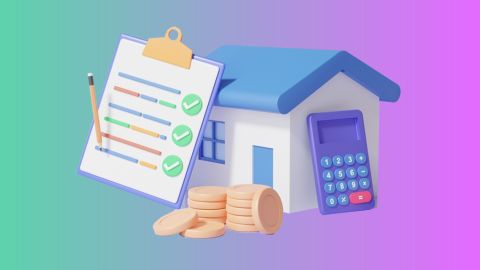In the realm of real estate, ensuring the property you intend to buy, sell, or mortgage is free from any legal or financial liabilities is crucial. Whether you are considering a loan against property by Bajaj Finance or any other property transaction, having a land encumbrance certificate (LEC) is indispensable. The LEC certifies that the property is free from any encumbrances, such as loans, mortgages, or legal disputes. This article delves into the details of what a land encumbrance certificate is, how to obtain one, and its legal significance.
Understanding land encumbrance in details
Land encumbrance refers to any legal or financial liability attached to a property. These may include mortgages, liens, unpaid dues, or ongoing legal disputes. Such encumbrances can impact ownership and the transfer of property, making it essential for buyers, sellers, and financial institutions to verify the property’s status before proceeding with any transaction. Understanding land encumbrance ensures that property dealings are transparent and free from hidden obligations.
For property owners, being aware of encumbrances is also crucial when leveraging the property for financial purposes. By opting for a loan against property, you can unlock funds while ensuring that all encumbrances are disclosed and managed. Leverage the power of your property to fulfil multiple financial needs. Get a loan against property with a simple application process.
What is a land encumbrance certificate (LEC)?
A land encumbrance certificate (LEC) is an official document issued by the sub-registrar’s office, certifying that a property is free from any legal or financial liabilities. The LEC includes a record of all registered transactions related to the property, such as sales, mortgages, and leases, over a specified period. This document is essential for confirming the legal status of the property, ensuring it is free from encumbrances and suitable for transactions.
How to obtain a land encumbrance certificate?
Obtaining a land encumbrance certificate involves several steps:
- Visit the sub-registrar’s office or online portal: Depending on your state, you can either visit the local sub-registrar’s office or use the official online portal for property services.
- Fill out the application form: Obtain and fill out the application form with accurate details of the property and the period for which the LEC is required.
- Attach the required documents: Provide necessary documents such as the property deed, proof of identity, and other relevant details.
- Pay the application fee: Pay the prescribed fee, which varies based on the period and the state regulations.
- Submit the application: Submit the completed application form along with the attached documents and proof of payment.
- Processing: The sub-registrar’s office will process the application, which can take a few days to a few weeks depending on the complexity and volume of applications.
- Collect or download the certificate: Once processed, you can collect the LEC from the sub-registrar’s office or download it from the online portal.
Importance of checking land encumbrance certificate
Checking the land encumbrance certificate is vital for several reasons:
- Verify ownership: Ensures that the seller has a clear title and the right to sell the property.
- Identify liabilities: Reveals any existing mortgages, liens, or legal disputes associated with the property.
- Secure transactions: Assures buyers and financial institutions that the property is free from encumbrances, facilitating smooth transactions.
- Legal compliance: Helps in complying with legal requirements, avoiding potential legal issues in the future.
Legal significance of land encumbrance certificate
The land encumbrance certificate holds significant legal importance:
- Proof of clear title: It serves as proof that the property has a clear title, free from any encumbrances, making it legally safe for transactions.
- Mandatory for loans: Financial institutions require an LEC to sanction loans against property, ensuring the collateral is free from liabilities.
- Legal dispute resolution: Helps in resolving legal disputes by providing a clear record of all transactions related to the property.
- Regulatory compliance: Ensures compliance with local property laws and regulations, preventing legal complications in property transactions.
Conclusion
In conclusion, obtaining and verifying that a land encumbrance certificate is a critical step in any property transaction. Whether you are buying, selling, or considering a loan against property by Bajaj Finance, ensuring the property is free from encumbrances is essential. The LEC provides the necessary assurance of a clear title, safeguarding your investment and ensuring smooth transactions. For those looking to leverage their property for financial benefits, Bajaj Finserv Loan Against Property offers a reliable solution. Visit Bajaj Finserv website today to explore their offerings and secure your financial future with confidence. Get a loan of up to Rs. 10.50 Crore* with the option of interest-only EMIs during the initial tenure.
By understanding the importance of the land encumbrance certificate and following the proper steps to obtain it, you can ensure a legally sound and hassle-free property transaction experience. The LEC not only confirms the property's legal status but also protects your interests in the long run.




